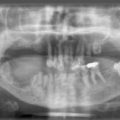Conclusion
Linear accelerators have undoubtedly become the mainstay of radiotherapy delivery in the developed world with cobalt teletherapy machines providing simplicity and economic benefits in the less affluent parts of the world. The linear accelerator and its beam shaping, intensity modulation and imaging facilities have provided clinical practice with enormous technical advantages which are now being evaluated in clinical trials. Specialized techniques, such as stereotactic radiotherapy and radiosurgery, have become widely recognized for their clinical benefits and dedicated machines are gradually establishing a niche in treating inoperable sites and providing new treatment opportunities for tackling cancer in patients. With all this technological advance, it remains important to bear in mind not only what is cost effective for treatment but also what can provide the best treatment process for the patient yet gives them the maximum benefit. Hence, there still remains a preference and a role for direct field treatments and even kilovoltage treatment to provide a simple process for say an aged patient or simply to expedite a treatment when intention is palliation and the maximum benefit to the patient is the time they spend away from the treatment centre rather than in it.
[1] Thwaites D.I., Tuohy J.B. Back to the future: the history and development of the clinical linear accelerator. Phys Med Biol. 2006;51:R343–R362.
[2] Karzmark C.J., Morton R.J. A primer on theory and operation of linear accelerators in radiation therapy, 2nd ed. Medical Physics Publishing, 1997.
[3] Stedeford B., Morgan H.M., Mayles W.P.M. The design of radiotherapy treatment room facilities. IPEM, 1997.
Stay updated, free articles. Join our Telegram channel

Full access? Get Clinical Tree




